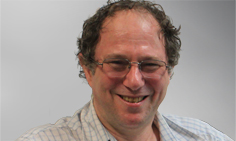MOST members of the medical profession know of the significant health disadvantage faced by the Aboriginal and Torres Strait Islander population in Australia.
Statistics are regularly released in addition to responses such as the Closing the Gap Prime Minister’s report presented to the Australian Parliament every year.
I suspect that it can be difficult for most medical practitioners in Australia who have little or no contact with Aboriginal and Torres Strait Islander patients to understand the meaning behind such aggregated data and its relationship to a particular patient they may encounter.
This is not unique to the medical profession. I was part of an education program for a group of senior police a few years ago, where an Aboriginal psychologist was attempting to give the police an understanding of Aboriginal and Torres Strait Islander mental health issues.
The police responded (politely) to the overview of Indigenous culture and history by saying they had had “enough of Aboriginal health 101” as they had attended numerous educational sessions on the issue. They wanted practical advice on how to manage an Indigenous offender with mental health issues who they might come across in the middle of the night. They did not feel that a general explanation of Aboriginal mental health issues had any relevance.
One factor that is very relevant to this scenario is racism — implicit and explicit, individual and organisational — that frequently impacts on the health management of Aboriginal and Torres Strait Islander people.
As the proud husband of an Aboriginal wife and father of Aboriginal children, I have had to wear the direct experience of poorly informed racist comments made to my family, or being ignored or passed over for attention by officials because I was in the company of my family or their relatives.
I know the anger that I felt in respect to such comments and treatment, and can identify with the stand Adam Goodes has taken following his well publicised direct experience of racism.
Racism from health practitioners and within health systems can also directly interfere with good health outcomes for Aboriginal and Torres Strait Islander people. A good summary of the social determinants for Aboriginal and Torres Strait Islander people’s emotional wellbeing explains the links.
Another significant issue is “transgenerational trauma”, which relates to trauma experienced by more than six generations of Aboriginal Australians involving colonisation, family breakdown and abuse. This is a significant contributing factor to many of the physical and mental ills affecting Aboriginal and Torres Strait Islander people and their interaction with the health system today.
The establishment of the Aboriginal community controlled health sector and the substantial increase in Aboriginal and Torres Strait Islander medical students, medical practitioners and other health professionals is an important defence against these significant negative influences on providing effective Indigenous health services.
Empowered Indigenous health organisations, under the umbrella of National Community Controlled Aboriginal Health Organisations, delivering health services in a culturally safe manner have made major contributions to improving health.
A good example is the Inala Indigenous Health Service established by Dr Noel Hayman in Brisbane. Inala was started within a mainstream health service and has developed strong collegial relationships and advocacy with a large group of doctors and specialists who work with them — a system that could benefit other medical practitioners working in the community sector of Indigenous health.
The AMA actively encourages medical practitioners who treat Aboriginal and Torres Strait Islander people to work with the Aboriginal Medical Service (AMS) to develop the optimal management for their clients. The heart health plan in Cairns is a good example of such collaboration.
The importance of the Australian Indigenous Doctors Association in actively promoting and supporting a steadily increasing number of Indigenous medical students and practitioners is a proud example of encouraging health practitioners who have an understanding of, and have often lived the experience of, these issues. They can make a significant contribution to improving the health of Indigenous and other Australians.
With the police and their predicament, I suggested they develop links and improved communication with the local AMS as this could lead to education and understanding to help them and their commanders to deal with the crisis call in the middle of the night. The person involved was likely to be a client of the AMS. The police seemed to think that this was a good idea.
It may also be useful for medical practitioners interested in “Closing the Gap” to educate themselves in a similar way.
Associate Professor Robert Parker was recently elected as president to the AMA Northern Territory. He is an adjunct associate professor of psychiatry with James Cook University and the Northern Territory Clinical School. He has authored or coauthored more than 30 articles on Aboriginal and Torres Strait Islander health and mental health issues.
Today is National Sorry Day.

 more_vert
more_vert